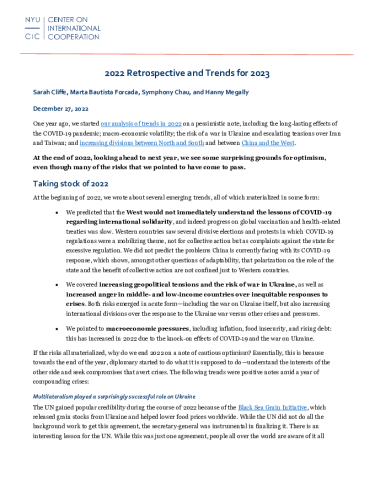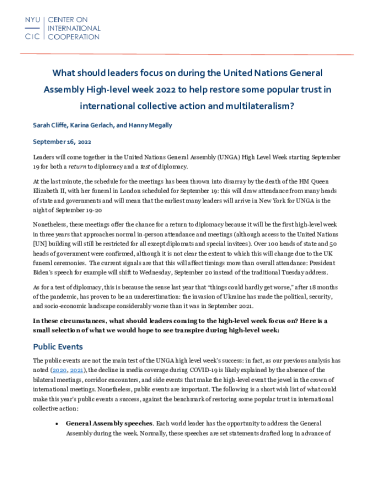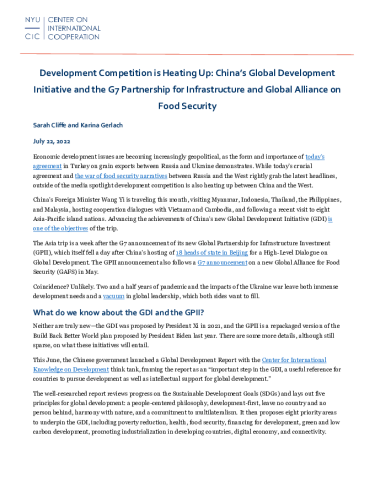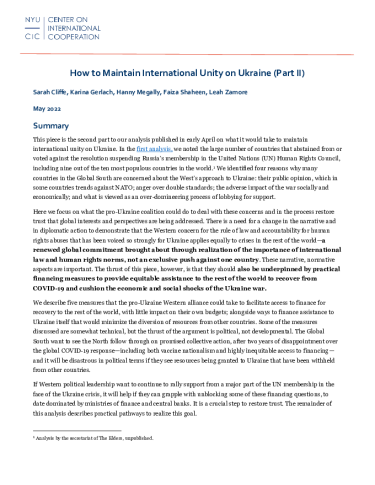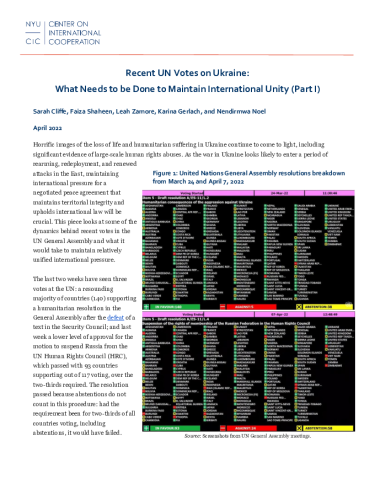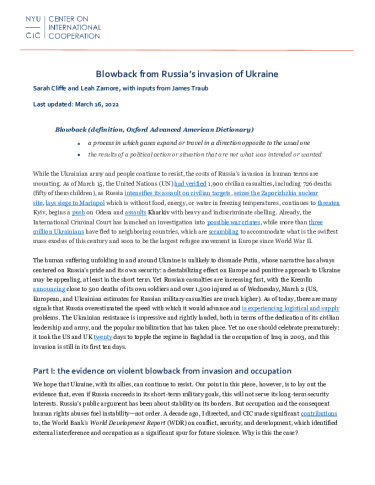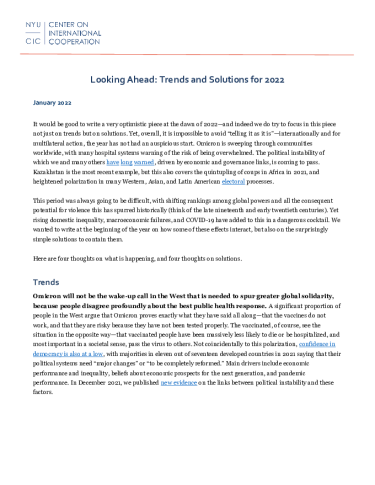One year ago, we started our analysis of trends in 2022 on a pessimistic note, including the long-lasting effects of the COVID-19 pandemic; macro-economic volatility; the risk of a war in Ukraine and escalating tensions over Iran and Taiwan; and increasing divisions between North and South and between China and the West.
At the end of 2022, looking ahead to next year, we see some surprising grounds for optimism, even though many of the risks that we pointed to have come to pass. These trends include how multilateralism played a surprisingly successful role in Ukraine, as we consider the Black Sea Grain Initiative and the UN resolutions that passed relating to the conflict, along with agreements during the G20 summit in Bali.
Other positive notes pertain to potentially transformative global agreements on damage and loss and international tax cooperation, and the absorption of longer-term lessons on inter-state aggression. However, on the negative end, we close the year facing multiple crises chasing the same (declining) pot of money—whether conflict, humanitarian, socio-economic or climate. For our team’s analysis of trends for 2023, there is a focus on nine areas where politics and economics are closely interlinked, and we expect this to be a dominant theme of 2023.
Download the full analysis: 2022 Retrospective and Trends for 2023
